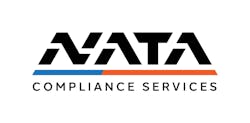
Airport security is a critical function of a safe operating environment.
Updated security measures were being implemented slowly prior to 2020, and then the COVID pandemic added urgency to these policies, according to Tyler Bartoo, client success specialist at NATA Compliance Services (NATA CS), who addressed the topic during NATA CS’s recent crew badging, best practices and benefits webinar.
With increased security checks, new challenges may arise.
“If you don't have identification, requirements for an escort have become quite common,” Bartoo says. “I've worked with a few maintenance companies where they had mechanics that traveled and they went to a particular location. And at that location – because they didn't have a badge or company identification – they were required to have an escort with them.”
An FBO or airport may charge for the escort’s time, and they may even have a minimum amount of time that they charge for, which Bartoo notes could factor into business practices. So he says it’s important to understand the reasons for having a secure airport identification badge.
Considerations for Badging Policies
In addition to wearing a badge wear in a clearly visible location, there are important best practices for badges and related procedures and policies.
Bartoo emphasizes that badge should not be shared by multiple people.
“Everyone should have their own badge with their own photo unique to that person. The content on that badge, the information, should be clear and legible – obviously not smudged or damaged in a way where you can't read it, or tell who it is.”
The photo should be current, too.
According to Bartoo, it is also important to establish an easy-to-understand method by which badges are issued and managed.
“Do you have a checklist or something that you're following, or some kind of process that you're following, every time to issue or manage the badges that you can put out to your employees?” he says. “If someone leaves the company or the badge expires, whatever the case may be, do you have a process to retrieve those badges and destroy them? And how do you know? How can you verify and make sure that that's happening?”
Having processes place allows a business to ensure these details are tracked correctly, Bartoo adds.
“Do you have the ability to deactivate and reactivate badges? You may work with some contract employees, too. It’s pretty common in our space,” he continues. “So, you may want to issue a badge to a contract employee. Maybe you don't want that badge to be active all the time. Can you activate it while they're working for you and deactivate it while they're not? Having that ability, at the very least, is important.
“Can you verify the employee status with the company? Are they an active employee? Are they not an active employee? Can that be checked by someone in security?”
Within a badging policy, Bartoo recommends including language for lost, stolen or damaged badges.
“Legibility is really important with these things, so if the badge becomes damaged or you can't read the name, what's the policy by which that employee can get a new badge issued or can get a replacement issued?” he says.
“Or if they lose it,” Bartoo continues. “Can they get that replaced in some way and are you able to track that process?”
If a badge is not working or it is showing the incorrect status for an employee, a policy should make it clear where issues can be reported and corrected.
Bartoo also notes best practices for both companies that print ID badges in house rather than relying on a third-party provider.
“Authorized personnel should be the ones that have access to either ordering or printing badges. You don't necessarily want anyone to just be able to walk into a room and print out a badge,” he says.
When printing in house, he recommends securing all materials. This provides a safeguard even if someone with nefarious goals gains access to the printer.
Because mechanical issues and breakdowns can occur. Bartoo also recommends having a back-up printer in a secure location to avoid disruptions in operations.
About the Author
Josh Smith
Editor
Josh Smith served as editor of Ground Support Worldwide as editor from 2016 through 2024. He oversaw production of the print magazine, created GSW's newsletters on a daily basis, and updated the latest news on AviationPros.com.
